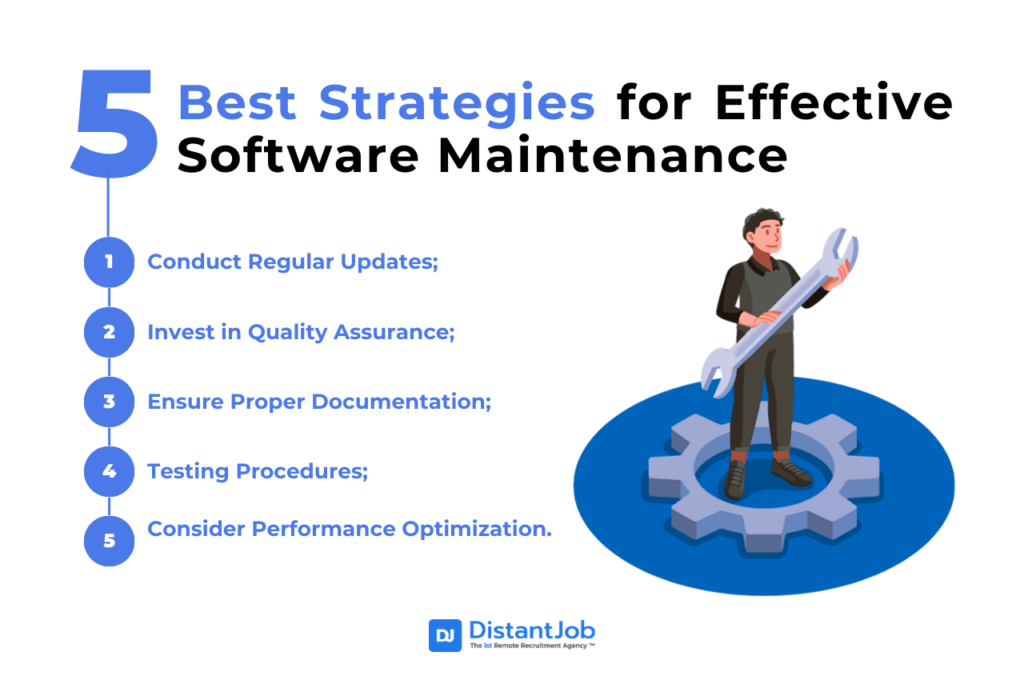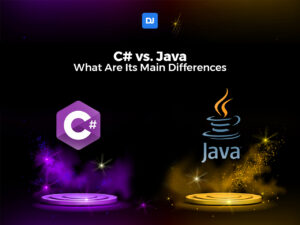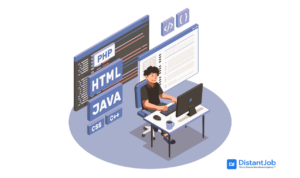When we talk about software development, the emphasis is always on the key stages of planning, design, coding, testing, and deployment. What we often overlook is that the software development cycle doesn’t end after the deployment phase.
Much of the work begins at the launch, but there’s an important phase after deployment—the software maintenance stage. Once you deploy your software, you must regularly refresh it to ensure it runs smoothly and the systems are reliable.
The software maintenance process is an essential part of the software development life cycle (SDLC) that seeks to enhance user experience, reduce downtime, and modify the system for future changes.
It’s a process that’s even more important for organizations in terms of software engineering as technology keeps changing, and it’s easy to lag behind the innovation train.
This article discusses Software Maintenance in detail, providing reasons why it is vital for your business’s success.
What is Software Maintenance?
Software maintenance is the process of changing, adapting, or updating software in terms of technology and user experience to keep up with the client’s needs. It happens once the software is released to correct bugs and boost performance.
However, software maintenance can be very costly. In fact, estimates from studies place the maintenance phase of SDLC at roughly 90% of its entire cost. This emphasizes how important continuous maintenance is for both performance enhancements and efficient cost management.
What are the 4 Types of Software Maintenance?
When it comes to software maintenance in engineering, there is no one-size-fits-all approach. Instead, every software product undergoes four distinct types of maintenance processes, each serving a specific purpose to address different needs throughout the software’s lifecycle.
1. Corrective Software Maintenance
As the name “corrective” suggests, this type of maintenance seeks to identify, analyze and rectify issues that could’ve surfaced during the software’s use.
For example, there are instances where users will report a bug or an error in a piece of software or when something significant goes wrong. Some of the reported issues could majorly impact the software functionality and must be addressed as quickly as possible.
It’s the role of your software development team to carry out a maintenance process that addresses the faults within software applications before they impact various parts of the software architecture such as the logic, and code. The best part with the corrective software maintenance process is that you don’t need to wait until users report an issue with the software product. You can always schedule corrective maintenance shifts to spot and address any faults before users discover error messages.
2. Preventive Software Maintenance
Preventive software maintenance involves addressing any small issues with the software that could blow up into something big. The process aims to reduce the risk associated with operating software by making it stable, understandable and maintainable.
This could go as far as looking into the future to make necessary upgrades or adaptations so that the software can continue to work as desired for a long time. For example, you may review the software and decide to optimize the code or update documentation, which, in turn, may prevent software deterioration throughout its adaptation and change.
3. Perfective Software Maintenance
Perfective software maintenance comes into play once the software is released and open for public use. It’s a maintenance approach often considered when new issues and ideas that could potentially make the software the best tool available arise.
This type of maintenance aims to modify software, including user suggestions or any feature that could be useful in the long run. It could also involve removing features that are not effective in the software. The process enhances user experience and keeps software up to date with the changing market and user dynamics.
4. Adaptive Software Maintenance
Adaptive software maintenance is a maintenance protocol that ensures the software is up-to-date and compatible with the new technologies, security threats, operational processes and many more. It’s a necessary process, especially when the software environment changes.
For example, if you’re running an e-commerce business and want to update payments on the site, then you’ll need to conduct an adaptive maintenance exercise to change the payment processors.You can also carry out the exercise to ensure a product interfaces with new software dependencies, hardware, or operating systems.
5 Best Strategies for Effective Software Maintenance

To ensure effective software maintenance for all your projects and software development process, start by implementing regular software monitoring to guarantee it is up to date and fully functional.
You should follow up with regular upgrades to ensure that the systems have the latest patches and features for a more secure and stable software.
Here is a more detailed look into the best strategies for effective software maintenance:
1. Conduct Regular Updates
The reason your software is prone to errors and systemic failures is because of the overlooked vulnerabilities that make it outdated. Software that’s not regularly maintained and updated has weaknesses that could lead to data breaches and slowed systems.
If you want to keep your software in its optimal state, consider updating it regularly to stay current with software versions. Updates provide improved functionality and the latest patches that address existing vulnerabilities like bugs and crashes.
2. Invest in Quality Assurance
As a standard protocol, your software must pass through various testing phases before going live. This is a necessary quality assurance procedure to troubleshoot and find short-term or temporary solutions to any problems. Always invest in proper end-to-end and UI testing for effective software maintenance to ensure usability and integration. Follow up with a concurrent Quality Assurance exercise from planning to the testing phases to further reduce the need for post-production software maintenance.
3. Ensure Proper Documentation
Detailed documentation plays a significant role in software maintenance by providing a roadmap for all maintenance activities. It works for complex software environments involving distributed teams working on one project.
Developers working on the software maintenance project can greatly enhance the quality and usefulness of the software products by following best practices documented. This makes it easier for future developers to maintain code and learn from the past developers’ mistakes.
4. Testing Procedures
Testing procedures are vital to ensure its continued relevance and effectiveness in any software maintenance exercise. It involves regularly reviewing new software updates and changes to ascertain whether they introduce any issues.Effective software maintenance requires you to establish rigorous testing procedures that can help maintain the integrity and functionality of your software. Set up testing procedures, such as unit or integration tests, that reveal whether your software performs as expected.
5. Consider Performance Optimization
Performance optimization in software maintenance refers to the process of refining the software to keep it as effective and efficient as possible. Optimizations are crucial preventative measures that help you resolve and address issues before they become critical.
Performance optimization practices in software maintenance ensure your software performs at its best over its minimum lifetime. This can take any form or measure, such as optimizing code or reworking the software architectural design to align with evolving technologies.
Conclusion
Software maintenance plays a crucial role in optimizing software systems and keeping them efficient throughout the SDLC. Maintenance processes such as preventive, perfective, adaptive and corrective are practices that are crucial for ongoing software improvement.
These maintenance practices are vital in software engineering as they improve software systems to make them more efficient. They also ensure increased productivity and could help you cut on revenue loss occasioned by costly workflow interruptions due to inefficient systems.
Given the significance of implementing all forms of software maintenance for your development projects, you cannot handle it unless you have a team of developers ready to do the work. At DistantJob, we specialize in connecting you with the top developers to streamline this process.Don’t let software issues slow you down. Contact us today and jumpstart your journey to effective software maintenance!




